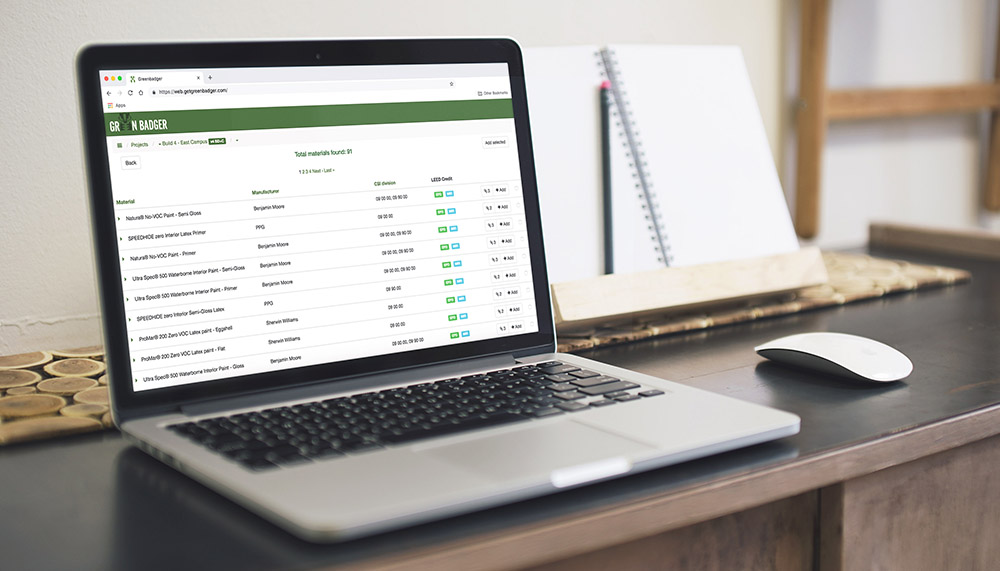Green certification of building projects faces multiple challenges; from sourcing appropriate products, documenting and verifying materials, through to minimizing, sorting, and recording construction waste.
Via Home Style Green
Compiling all this information in a form that’s useful for the certifying agency can be yet another big challenge. Through Green Badger, Tommy Linstroth’s goals is to make sustainability in the built environment as easy as possible.
Green Badger is a cloud-based software platform that helps builders and contractors streamline and automate green building compliance. Simplifying these compliance processes allows builders and contractors to focus on building their building properly instead of chasing paperwork.
A Green Consultant’s Challenge
Tommy had worked as a LEED consultant and faced the challenge of tracking progress and documentation of multiple projects at once. Before Green Badger, this would mean a lot of manual sorting and very large spreadsheets to track everything. He soon realised that a platform for efficiently organising his own projects would also be useful for other consultants. With this revelation, Tommy shifted gears to focus on providing a software platform.
Reducing the Cost of Green Certification
Green Badger can help buildings achieve the green goals of the building owner by helping reduce the cost of certification. Consultant and certification fees can be a significant barrier to a project going right through to formal certification. Or if a project is fully committed to certification, the fees involved may impact some of the budget that could otherwise go towards additional solar panels or other beneficial features. By reducing the work and cost involved in the certification process, Green Badger may mean that there’s enough money left over to invest in more green features.
Who Uses Green Badger?
The primary users of Green Badger are the main contractor on buildings that are seeking LEED certification.
Tommy explains that their onboarding process involves teaching contractors about the LEED process as well as teaching builders how to use the Green Badger platform. “LEED is not most of these peoples’ full-time jobs”, says Tommy. “Our software won’t work if they don’t understand the basics of LEED”. So Green Badger provides some brief background training and pretty soon even new users are up and running by themselves.

Product Selection
Tommy explained that many architects leave product selection up to the contractor, sometimes specifying product attributes only in general terms. This lack of specificity shifts the burden of product selection to the contractor. Green Badger helps resolve this by including a searchable product database into the platform. Contractors can filter by the requirements they need and compare different options before making a selection. Once a selection is made, the software then automatically compiles the information required for certification. Green Badger released the LEED Product Guide to help project teams with product selection.
LEED is still the Leader
Tommy explained that LEED certification is very strong in the US. New ratings systems such as WELL are emerging that focus on health and well being, but LEED is still the gold standard for green certification. LEED is required on almost all federally funded buildings in the US, over half of the States in the US require LEED and over 1,000 municipalities and universities require it. 85% of Fortune 100 companies require LEED for their facilities. Overall, Tommy estimates that 40% of the whole construction market in the US has some sort of green certification requirement.
Is Green Certification just Green Washing?
There have been recent discussions online about the true cost and environmental value of green certifications for buildings. There is some concern that the process of allocating points to items like back racks, plants and even solar panels on the roof, distracts designers from focussing on the fundamentals of a well-performing, energy-efficient building envelope. Why spend time and money designing out thermal bridges and designing in airtightness, when you can simply add some sexy solar panels to the roof for the same number of points? I posed this question to Tommy and he suggested that this isn’t a particularly new argument.
“Every system is going to have its critics”, says Tommy. “Any certification is going to be better than a code-built building.”
Beyond LEED Certification
Green Badger currently works almost entirely with LEED certification only. Tommy understands that there other rating tools in the marketplace, and other regions (beyond the US) to serve. We look forward to services like Green Badger extending to include other rating systems, in other jurisdictions.
Biggest Challenge for Contractors
The biggest certification problem for contractors is product verification and tracking. This is compounded by the continual evolution of products in the market. Keeping up to date with new products can be as challenging as figuring out what the certification requires. And when large projects may take multiple years to complete, the goalposts might even shift during the construction period. “Not everyone’s a material scientist,” says Tommy. Which is why he wants to make the process as easy as possible to understand.
Find out More:
The Green Badger website is full of short, user-friendly videos to explain aspects of the LEED certification process as well as the features of the Green Badger platform itself. It’s definitely worth a browse. Working on a LEED airport project? Check out our post on LEED in the aviation world.




